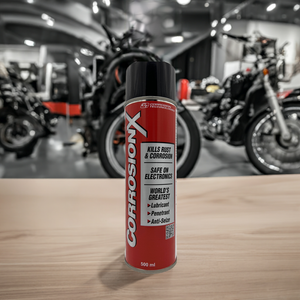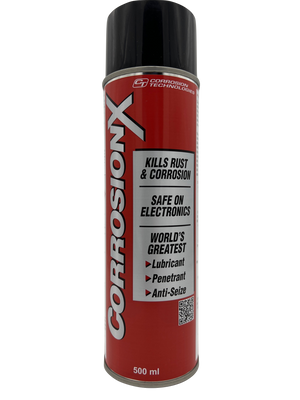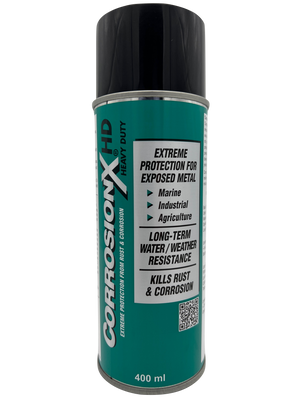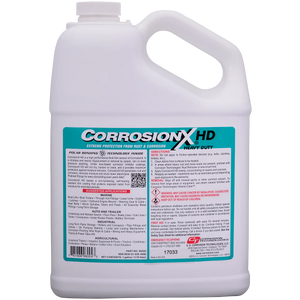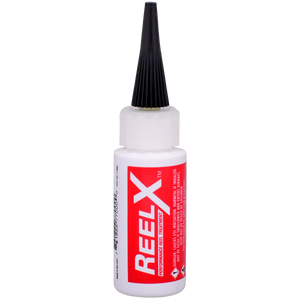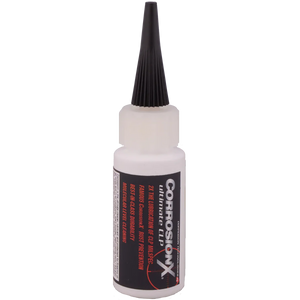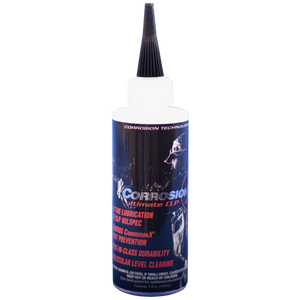Have you ever wondered why some guns keep firing like a dream for decades while others seem to break down or rust almost overnight? If you’ve ever compared two seemingly similar firearms—one meticulously cared for and one left to fend for itself in a moist corner of a gun safe—you know the difference proper maintenance can make. And when it comes to firearm upkeep, one product stands above all others: gun oil.
But what exactly is gun oil, why do you need it, and how can you make sure you’re using the right type for your firearm? In this comprehensive, conversational guide, we’re going to explore everything from how gun oil protects those all-important metal parts from corrosion to the nitty-gritty details of choosing the right lubricant for your specific shooting needs. We’ll also discuss why skipping routine lubrication could be one of the worst things you can do for your trusty firearm—and how to avoid that pitfall. By the end of this article, you’ll walk away with a solid understanding of firearm maintenance, an appreciation for the miracles of modern gun oils, and practical tips for keeping your favorite firearm in tip-top shape for years (or even decades) to come.
So, whether you’re a weekend hunter, a dedicated competitive shooter, a law enforcement professional, or a brand-new firearm owner, grab a cup of coffee, settle in, and let’s talk gun oil!
The Basics – Why Firearms Need a Protective Layer
Metal vs. Mother Nature: The Battle Against Rust
Picture this: You’re out on a hunt, your rifle slung over your shoulder as you trudge through the early morning dew. Or maybe you’re at the range, practicing your aim on a sweltering summer afternoon, perspiration trickling down your arms. In both scenarios, your firearm’s metal components are coming into contact with moisture—be it dew, rain, humidity, or even sweat. Moisture is the sworn enemy of metal, inviting rust and corrosion to set up shop on your firearm’s surfaces.
When rust takes hold, it’s not just about unsightly brown spots. Corrosion can eat away at the very integrity of your firearm, affecting performance, accuracy, and even safety. And that’s where gun oil steps in like a superhero. A quality oil coats the metal, creating a shield that blocks out moisture. Think of it like a raincoat for your steel, protecting against Mother Nature’s attempts to break it down.
In short, no matter where you live—be it the dry heat of Arizona or the damp chill of Northern Europe—your firearm’s metal parts need a protective layer. Gun oil is that layer, acting as a crucial barrier that prevents oxidation (rust) and preserves the longevity of your investment.
Lubrication 101 – Ensuring Smooth Operation
Now, let’s talk about what happens on the inside of your firearm. Modern firearms are engineering marvels with countless moving parts, from the trigger assembly to the bolt carrier group. These components rub against each other every time you pull the trigger. Without lubrication, the friction between metal parts can cause excessive wear and tear, eventually leading to malfunctions, jams, or even permanent damage.
Gun oil steps in like the grease on a car’s engine parts—without it, everything grinds to a halt sooner rather than later. A little lubrication goes a long way in preventing your firearm from locking up at the worst possible time. And if you ever find yourself in a high-stakes situation—whether that’s a trophy hunt or a home-defense scenario—you don’t want to be worrying about a jam.
A Cornerstone of Maintenance
Gun oil isn’t just a luxury item or an optional extra—it’s a cornerstone of firearm maintenance. By protecting against corrosion and reducing friction, quality oil extends the lifespan of your firearms. You’ll spend less money on replacement parts and fewer hours troubleshooting mechanical issues. Instead, you can focus on what really matters: honing your aim, enjoying a day out in the field, or simply having peace of mind that your firearm will function reliably when you need it.
Different Guns, Different Needs – One Size Does Not Fit All
Hunting Rifles vs. Competition Firearms
You wouldn’t dress for a black-tie gala the same way you would for a weekend camping trip, right? The same logic applies to firearm maintenance. Different firearms—and different uses—require specific kinds of gun oils. For example, if you’re a hunter, you’re probably exposing your rifle to muddy fields, damp forests, and varying temperatures. You need a durable, robust oil that can stand up to dirt, moisture, and temperature swings without breaking down or becoming too sticky.
On the flip side, if you’re a precision shooter in competitive events, you might prioritize a light, friction-reducing oil that offers maximum accuracy. When you’re trying to tighten your groupings or shave milliseconds off your split times, even a slight increase in friction can affect performance. Think of it like putting high-performance racing oil into a dragster versus using an all-season motor oil in your trusty family sedan.
Handguns and Home Defense Weapons
Handguns often have compact, closely fitted parts that function best with a lighter oil. Many modern semi-automatic pistols are built with tight tolerances that demand a well-chosen lubricant—too thick, and the slide might feel sluggish; too thin, and you might not get the long-term corrosion protection you need.
For those concerned with home defense, reliability is king. You want an oil that remains effective even if the firearm sits in a safe for months on end but still delivers peak performance the moment you grab it. There’s a balancing act here: you need an oil that won’t gum up over time, yet still offers enough lubrication and protective qualities to be ready at a second’s notice.
Shotguns for Sporting and Hunting
Shotguns can be a whole different animal. They’re often subjected to heavy recoil, exposure to powder residue, and the occasional rough treatment (any seasoned bird hunter can tell you about accidentally dropping their shotgun in the mud!). If you regularly use a shotgun for hunting, you’ll need an oil that can handle these rigors—staying in place even during rapid firing sequences and protecting the barrel and action from the grit and grime that inevitably get in.
Common Mistakes and Myths About Gun Oil
“All Oils Are the Same, Right?”
One of the biggest misconceptions is that any oil is better than no oil. While there is a small grain of truth here—yes, any lubrication is typically better than running a firearm completely dry—using the wrong kind of oil can actually do more harm than good. For instance, some people might be tempted to grab a generic household lubricant from their garage. But these products often lack the specialized properties that combat both friction and corrosion in firearms. They might even contain ingredients that could degrade or gum up your gun’s internal components over time.
Over-Lubrication vs. Under-Lubrication
On the other side of the spectrum, there’s the question of how much oil is too much. If your motto is “more is always better,” you might be tempted to soak your firearm in oil as if you’re marinating a steak. But an overly lubed gun can attract dust, dirt, and unburnt powder. All that grime can eventually form a sticky sludge that could hamper performance. The key is to apply just enough oil to coat critical parts without creating pools of excess fluid. Think of it as a light film rather than a deep bath.
Under-lubrication, however, comes with its own set of issues. If you don’t apply enough oil, you might be leaving the metal parts exposed to moisture or frictional stress. Like riding a bicycle chain that’s completely dry, it might work for a little while, but eventually, the squeaks, rust, and damage will set in.
The “Set It and Forget It” Mentality
Another common mistake is treating a firearm like a cast-iron skillet—season it once and never worry about it again. Firearms need regular cleaning, inspection, and re-lubrication, particularly if they’re used often or stored in harsh conditions. Even if your gun has been sitting in a safe for months, environmental changes can cause condensation or dryness, both of which can compromise your oil’s effectiveness. Regular checks and touch-ups will ensure your firearm is always ready when you need it.
Choosing the Right Gun Oil – A Quick Buyer’s Guide
Synthetic vs. Mineral Oils
In the world of gun oils, you’ll come across two primary categories: synthetic and mineral-based. Synthetic oils are man-made lubricants that often offer superior temperature stability and longevity. They don’t break down as easily under extreme heat or cold, and they’re generally better at resisting oxidation. That’s why you’ll frequently see serious competitive shooters or law enforcement professionals opting for synthetic blends.
Mineral-based oils, on the other hand, come from refined petroleum. They can be perfectly fine for casual shooters or those in moderate climates, but they may not perform as well under stress. Mineral oils can also vary widely in quality, making it crucial to buy from a reputable brand.
CLP – Clean, Lubricate, Protect
If you’ve spent any time in gun forums or talking to firearms enthusiasts, you’ve likely heard the term CLP. Short for Clean, Lubricate, Protect, CLP products combine multiple functions into a single formula. The upside is convenience: you can clean off residue and lubricate your gun in one go. The downside is that some “all-in-one” products might be less specialized, meaning they might not excel in one particular function as well as dedicated solutions do. That said, if you value simplicity and speed, a high-quality CLP can be an excellent choice.
Environmental Considerations
Where and how you shoot can play a significant role in which oil is best for you. If you’re in a humid region, you’ll need a product that excels at moisture displacement. If you frequently shoot in cold temperatures, you need an oil that stays fluid rather than gelling up in the cold. And if you shoot in dusty or sandy environments, you want an oil that doesn’t attract grit like a magnet.
CorrosionX – A Standout Choice
Among the many brands available, CorrosionX for Guns has garnered a solid reputation for its strong protective capabilities and reliable lubrication. If you’re located in Finland—or anywhere that deals with a fair amount of moisture—you might be interested to know that CorrosionX for Guns is readily available from Tallitkuntoon. Tallitkuntoon doesn’t just offer CorrosionX; they also provide dedicated customer service and expert knowledge on not only CorrosionX but also Swisstrax products. So if you have specialized questions or unique storage conditions, their expertise can help you pick the perfect solution for your needs.
Step-by-Step: How to Properly Oil Your Firearm
Gather Your Supplies
Before you start, make sure you have everything you need:
- Your chosen gun oil (or CLP)
- Cleaning patches and rods (or a bore snake)
- A microfiber cloth or cleaning rag
- A brush or toothbrush for scrubbing hard-to-reach areas
- Protective gloves (optional but recommended)
- A well-ventilated, clean workspace
Having these items on hand will make the process smoother and prevent you from having to run back and forth looking for missing tools.
Disassemble Your Firearm (According to the Manual)
Always follow the manufacturer’s instructions for disassembling your firearm. If you’re unsure, consult your owner’s manual or a reliable online tutorial from the gun’s manufacturer. Remove the barrel, slide, bolt, or any other parts that require direct cleaning and lubrication.
Safety Tip: Ensure your firearm is completely unloaded and the chamber is visually verified to be empty before starting any cleaning or maintenance procedure.
Clean Before You Oil
While some CLP products allow you to clean and lubricate in one step, it’s often best to give your firearm a thorough cleaning first. Use a brush or patch to remove any powder residue or carbon buildup. Pay extra attention to areas where grime is likely to accumulate, such as the barrel and the bolt face. After cleaning, wipe away any excess debris with a microfiber cloth.
Apply Oil Sparingly
Now comes the main event: lubrication. Add a small drop of oil to the critical points—parts of your gun that move against each other. This might include the slide rails on a pistol, the bolt carrier group in a rifle, or the hinge points in a shotgun. Spread the oil gently with a cloth or your finger (gloved if you prefer) to ensure an even film.
Avoid pouring oil directly onto your parts or soaking them unless the manufacturer specifically recommends it. Remember, your goal is a thin, protective layer, not a messy puddle.
Reassemble and Function Check
Once your parts are properly oiled, carefully reassemble your firearm according to the manufacturer’s instructions. Perform a quick function check: rack the slide, pull the trigger (with the gun unloaded, of course), and inspect any moving parts to ensure everything feels smooth. A well-oiled gun should exhibit effortless motion with no grinding or catching.
The Lifespan Factor – How Gun Oil Extends Your Firearm’s Life
Minimizing Wear and Tear
Every shot fired creates friction, heat, and mechanical stress within your firearm. Over time, these factors can degrade metal surfaces, loosen parts, and reduce overall reliability. By regularly applying gun oil, you’re minimizing the friction between moving components, thereby reducing the microscopic abrasions that can evolve into bigger problems. It’s a bit like adding years to your car’s engine life through regular oil changes—simple yet highly effective.
Rust Prevention Over the Long Haul
Corrosion is sneaky. It doesn’t show its face overnight, especially if you’re storing your firearm in a moderately controlled environment. But it can silently nibble away at metal parts until one day you find a rust patch in a hidden nook. Regularly applying a high-quality oil forms a shield that water and oxygen molecules have a harder time penetrating. This means your gun stays free of rust and pitting, helping you maintain not only its functionality but also its resale value—because a well-maintained firearm can hold or even increase its value over time.
Cost Savings and Peace of Mind
Even if you’re not mechanically inclined, you’ll likely appreciate not having to replace parts prematurely or pay for costly gunsmith repairs. A small investment in a good gun oil and a bit of time spent on maintenance can save you big bucks down the road. Plus, there’s the added mental benefit of knowing your firearm will perform reliably when it matters most—no second-guessing or stressful malfunctions.
The Performance Edge – Consistency, Accuracy, and Confidence
Trigger Pull and Accuracy
In precision shooting, consistency is everything. A gun that’s intermittently jamming or whose trigger pull varies from shot to shot can ruin your shooting experience—and your score. Gun oil helps keep the internal mechanisms of the trigger assembly smooth, ensuring that your trigger pull feels consistent each time. This consistency boosts accuracy, allowing you to develop muscle memory and confidence in your shots.
Reliability in High-Stakes Scenarios
Whether you’re a law enforcement officer, a security professional, or simply a civilian interested in self-defense, a jam at the critical moment is the stuff of nightmares. A well-lubricated firearm is far less likely to fail you under stress. When every split second counts, you don’t want friction to slow you down. Gun oil is the unsung hero, quietly ensuring that each round feeds, fires, and ejects as designed.
Enhancing the Overall Shooting Experience
Let’s be honest: there’s something deeply satisfying about the tactile feel of a smoothly operating firearm. Whether you’re racking the slide on a pistol or cycling the bolt on a rifle, that seamless action adds to your overall shooting enjoyment. Gun oil’s role in reducing friction isn’t just about preventing malfunctions—it also makes the entire process more pleasant and refined.
Frequency of Maintenance – How Often Should You Oil?
After Every Range Session
A common practice is to give your firearm a basic cleaning and lubrication after every range session. Gunpowder residue, dirt, and even the oils from your hands can accumulate quickly, especially if you’re shooting multiple rounds. A quick wipe-down and a few drops of oil on critical parts can go a long way toward preventing corrosion and maintaining smooth function.
Seasonal Storage Checks
If you’re storing your firearm for an extended period—like between hunting seasons—make it a habit to check its condition at least once every couple of months. Humidity and temperature changes in storage areas can cause condensation or dryness, both of which can degrade your protective oil layer over time. A brief inspection can reveal any spots where the oil might have evaporated or broken down, letting you reapply it before rust has a chance to form.
High-Volume Shooters
If you’re a competitive shooter or someone who goes through hundreds (or thousands) of rounds per month, you might need to clean and re-lubricate more frequently. The heat and friction generated in rapid-fire situations can degrade oil faster than casual shooting sessions. In these cases, don’t wait for obvious signs of wear—proactively reapply oil as part of your routine.
Consequences of Skipping Oil – Don’t Learn the Hard Way
Jammed Actions and Malfunctions
One of the most immediate consequences of skipping lubrication is a jam. You’re out on a hunt or in the middle of a competition, and suddenly your firearm refuses to cycle. This can be frustrating at best and disastrous at worst. In a self-defense scenario, a malfunctioning gun can put your safety at serious risk.
Accelerated Wear
Even if your gun doesn’t jam outright, the lack of lubrication means the metal parts are grinding against each other with increased friction. Over time, this leads to wear patterns that can degrade accuracy, cause parts to loosen, or even warp vital components like the barrel or bolt. Think of it like running your car engine without oil—it might run for a short while, but the damage piles up very quickly.
Corrosion Creeping In
Remember that rust is patient—it doesn’t need you to notice it to start forming. Once corrosion gets a foothold, reversing it can be challenging and costly. Severe rust might require professional gunsmith work, and in extreme cases, it can make a firearm unsafe to shoot. Regular oil applications serve as the first line of defense in keeping corrosion at bay.
Going the Extra Mile – Supplements to Gun Oil
Grease for Heavy-Duty Areas
Some shooters prefer applying grease to high-friction areas like slide rails or bolt carriers. While grease can provide longer-lasting lubrication under heavy use, it may also attract more dirt. It’s often used in conjunction with gun oil, where you might apply grease to specific stress points and use gun oil for general corrosion protection on other surfaces.
Rust Preventatives and Wipes
If you live in a particularly humid area or frequently shoot in wet conditions, you might consider using specialized rust-preventative sprays or wipes. These products can add an extra layer of protection on top of your standard oil application. However, they should be seen as a supplement, not a replacement for a quality gun oil.
Regular Inspections and Gunsmith Visits
No matter how meticulously you maintain your firearm, there’s no substitute for periodic professional inspections—especially if you own high-value or antique guns. A qualified gunsmith can identify early signs of wear or damage that might escape the untrained eye. Think of it like taking your car in for a tune-up—even if you’re diligent about changing the oil at home, an expert might catch issues before they become significant.
Where to Find Quality Gun Oil in Finland – CorrosionX and More
If you happen to reside in Finland or are simply looking for a trusted supplier in the region, consider checking out Tallitkuntoon. They offer a range of products, including CorrosionX, which is renowned for its top-tier corrosion protection and lubrication properties. What sets Tallitkuntoon apart is their dedicated customer service and deep expertise. If you have questions about the best way to protect your firearm against Finland’s sometimes challenging weather conditions—or even need guidance on other premium products like Swisstrax—they can provide personalized advice.
Their team doesn’t just stock products; they stand behind them. So if you’re unsure which type of CorrosionX is right for your rifle, or you’re curious about the best cleaning regimen for your new shotgun, don’t hesitate to reach out. They’re more than happy to walk you through the specifics, ensuring you get the most out of your investment.
Conclusion – Keep Your Firearms Running Like New
Gun oil might not be the flashiest accessory in your shooting kit—there are no neon signs or fancy gadgets to show off—but it’s arguably one of the most critical. It protects, lubricates, and prolongs the life of your firearms in ways that no other product can. Without it, you risk rusty barrels, jammed actions, and a shorter overall lifespan for your favorite guns.
From hunting rifles that brave the elements to high-performance competition guns that demand precise lubrication, the right gun oil can make all the difference. By following a routine maintenance schedule—cleaning and re-lubricating after each range trip, checking stored guns periodically, and seeking professional advice when needed—you’ll ensure that your firearms remain reliable partners for years to come.
And if you’re in Finland or simply want to explore a brand known for its exceptional protective qualities, CorrosionX is a strong contender. Through Tallitkuntoon, you can gain access to expert guidance, top-tier customer service, and a product lineup that keeps your firearms ready for anything—rain, sleet, snow, or shine.
So the next time you pick up your gun, remember: a smooth pull of the slide or a crisp break of the trigger often starts with a few drops of high-quality oil. Don’t neglect it. Invest in proper lubrication and cleaning, and your firearm will reward you with years of unwavering performance—like a loyal companion that never lets you down.
Final Thoughts
- Gun oil is more than just a lubricant; it’s a lifeline for your firearm’s critical components.
- Different firearms and scenarios call for different types of oils—choose wisely.
- A small amount of quality oil can save you from big headaches down the line.
- Regular maintenance is crucial—don’t wait for signs of corrosion or malfunctions to appear.
- In Finland, Tallitkuntoon is a reliable source for CorrosionX, offering expert advice and top-quality products.
With that, you’re fully equipped to understand why gun oil is essential for firearm maintenance—and how to get the most out of it. Keep your firearms well-oiled and they’ll serve you faithfully, shot after shot. Safe shooting!


